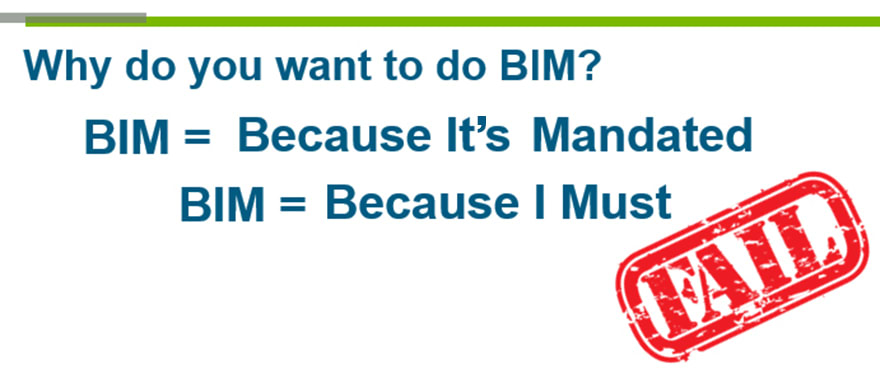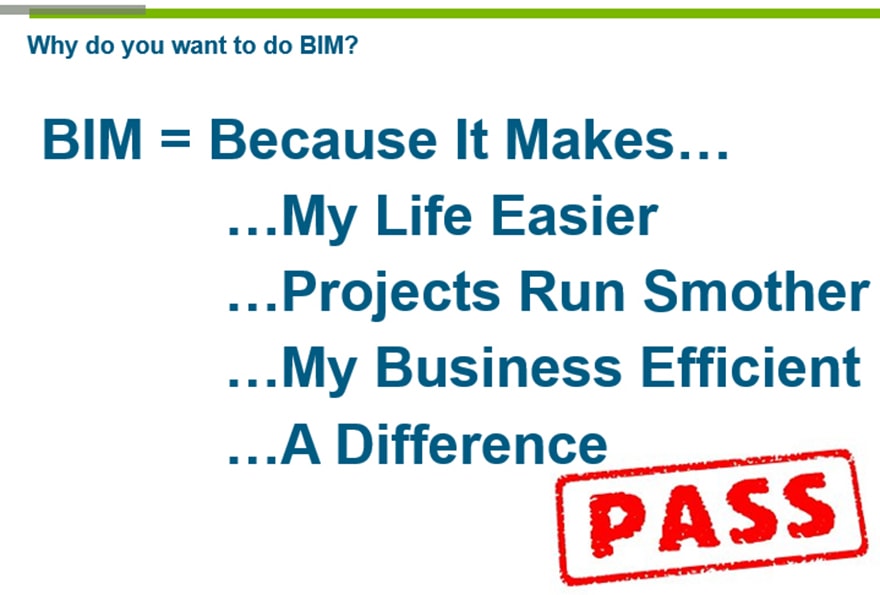Why I’m going to continue delivering BIM Level 6 says Mike Turpin, BIM manager at Capita Property & Infrastructure.
BIM Open Mic is one of those slightly different events in the BIM calendar where the presenting rules are thrown to one side with no defined themes, topics or agendas given – in fact until everyone has arrived there aren’t even any speakers or presentation lined up!
The informal and open style of this event (coupled with the free beers) means that speakers are far more open to discuss some of the important issues and bugbears surrounding BIM, leading to some interesting and thought-provoking debates.
So the afternoon of BIM Open Mic had arrived and after having “one of those days” that I am sure most BIM managers can sympathise with I had the last-minute idea of throwing together my thoughts into a PowerPoint presentation. With 30 minutes to go before jumping on the tube, I pulled together a handful of images, a few lines of text and arranged them into some kind of logical order.

My presentation on the night opened with the simple text “Why BIM?…”. This is a question I am often asked in my role as BIM manager and also a question I often ask of others looking to adopt and implement BIM.
It’s one of those questions that has to have a good and justified answer and I’m glad to say that the vast majority of the time it does. However, there are also the times when you will hear the answer “because it’s mandated” or similar words.
In my experience whenever I hear that someone is beginning their BIM journey purely because they have been “told to” rather than for any of the wide array of proven benefits, I immediately see the long struggle they face ahead, but I also look forward to the inevitable turning point when the “because I must” turns into the “because it makes sense”.

So now that you have worked out why you want to do BIM and made the decision to adopt this great new process which is going to bring our outdated and inefficient construction industry to the forefront of a digital revolution and put the UK above its peers around the world, you hear that magical BIM phrase “Level 2”.
The work that the UK BIM Task Group has put in to creating, documenting and defining the various levels of BIM is a great string to the UK’s bow and a huge achievement in turning our industry around.
My biggest disappointment with BIM Level 2 is that is has become an overused and misunderstood phrase almost to the same level as the acronym of BIM itself. BIM Level 2 is set out as a process with various standards explaining its use primarily for the UK government as a client.
Through this misunderstanding and confusion generated within the built environment we have seen BIM Level 2 defined as everything and anything to do with BIM. I hope that this is only a short term misguidance. However, on the flip side, as long as people are following some BIM standards does it matter what they name it? Does the name you apply to a process affect the effectiveness of the process itself?
As long as the output is clearly defined and that the whole team and client are clear of the objectives then I would be happy calling this BIM Level 99+.
This brought me on to my third and final point (ok, mini rant) about all of the currently defined BIM levels and how no matter whether you’re working for a private or public sector client, government funded project or not, everything is still defined as either BIM Level 2 or no BIM (Level 0).
Somehow in this race for the whole industry to become BIM Level 2 compliant and BIM ready for April 2016 we have all forgotten how to count. As BIM is an evolutionary process where in theory we are all starting at Level 0, should we not evolve by moving to Level 1 first and then once we have adopted that continue our forward journey into Level 2 and eventually onwards to Level 3.
Considering the above and all of the other speakers’ topics raised during the evening and subsequent discussions, you might be thinking why? Why do we continue to try to drive BIM throughout our industry?
This is the easiest question of all to answer and I am hopeful that most if not all of my fellow colleagues and BIM advocates will agree with my answer. We keep doing this because we all believe in the brighter future BIM can bring to construction and the built environment, because we believe that no matter how tough it might be each and every person can make a difference.
If over my career I can help just a fraction of the industry improve their current processes and evolve then I feel that is a fantastic achievement and if the rest of the UK BIM collective can do the same then change is not too far past the horizon.
Comments
Comments are closed.













You are right that the spirit is what counts, and that the BIM process when understood correctly provides it’s own justification regardless of mandate. However, as opposed to rejecting these terms, I think we need to rein them back in.
Like you Mike, I am disappointed by what we as an industry have been delivered around BIM Level 2. In my opinion, the biggest failing has been the lack of policing. Industry has training courses and business certification (like ours), but no compliance scheme to assess these services to ensure they deliver the correct message. We were also promised unified standards, and a guidance document at the Launch of BIM Level 2 in April and yet we have no unified standards, and no guidance document. How are we as an industry meant to receive a consistent message if we are still missing content, the content we have is incorrect, and the services provided are not controlled?
We have an agreed BIM Level 2 definition and the tools to disseminate and enforce it. Without an authority to ensuring consistency however, it is left up to those who shout loudest. While I can shout pretty loud, there is only so far these melodic Welsh tones can go!
Quite right Mike. For me, BIM mostly boils down to two things:
1. What does the employer client want.
2. How does the supply chain deliver what the client wants.
So, nothing new there then, and BIM is only a facilitator to these ends. Who cares what level it’s at or what acronym is used, that’s all junk, it’s being capable and able to deliver projects for clients that save clients money that matters.
What the BIM Task Group has achieved the most is in turning all our little (and big in the case of Capita) ships around to face roughly the same direction. That in itself is a massive achievement considering all the vested interests and prima-donnas at work in the construction industry.
So, what do WE try and achieve in our projects?
1. Get a clear idea what the employer client wants – the EIR does this alongside the brief.
2. How do we and our fellow supply chain delivery members deliver what the employer client wants – establish a BEP and get everyone to sign up to it.
All the EIR and BEP do is formally get everyone to agree, in writing, what we are going to do and how, instead of verbally agreeing and then finding that some members renege on their responsibilities or argue my way is better than yours and the employer client has nothing to hang them with.
It’s all very simple, not too taxing on time, resource and money (especially if you have a good template) and gives the employer client what they want or perhaps more importantly, what they think they are paying for.
And that’s BIM in a nutshell. It’s only formalising what we have been doing in construction for decades, but it makes us all more efficient, productive, collaborate better and profitable, so we all benefit.
In the end your ‘Pass’ bullets also fail because it’s not about whether YOUR business (i.e Capita) benefits, but whether the EMPLOYER CLIENT organisation benefits, because, after all, they are paying for the built asset, and if that’s a publicly funded project that means us tax payers.
As an outsider working in the construction industry (as a leadership advisor within a QS firm), your article struck a chord with me. There’s a tendency to think ‘process’ in this industry rather than the deeper issue of “why we believe in this”. In other words, “If I get the hang of the process I can comply and tick the box without necessarily believing in the principle of what we’re doing.” Happily we’re getting beyond that style of thinking within Poole Dick (the QS firm) but it’s not easy getting beyond the default ‘process’ setting.
There’s a wonderful explanation of this by Celeste Headlee in her TED talk about the art of great conversations. For her it’s about INTENT – for example, do we listen with the intent of understanding or replying? Same thing with BIM. Do we believe it’s the right thing to do or is it just a necessary evil?
The race to BIM level 2 is a bit like the space race in the 50s & 60s. It’s all well and good knowing you want to get into BIM (space), but it’s another thing knowing what you want to get out of it. Too many people in the industry knowing they want to get into BIM but, beyond the ability to tender for BIM projects, having no idea of why and not knowing or the benefits.